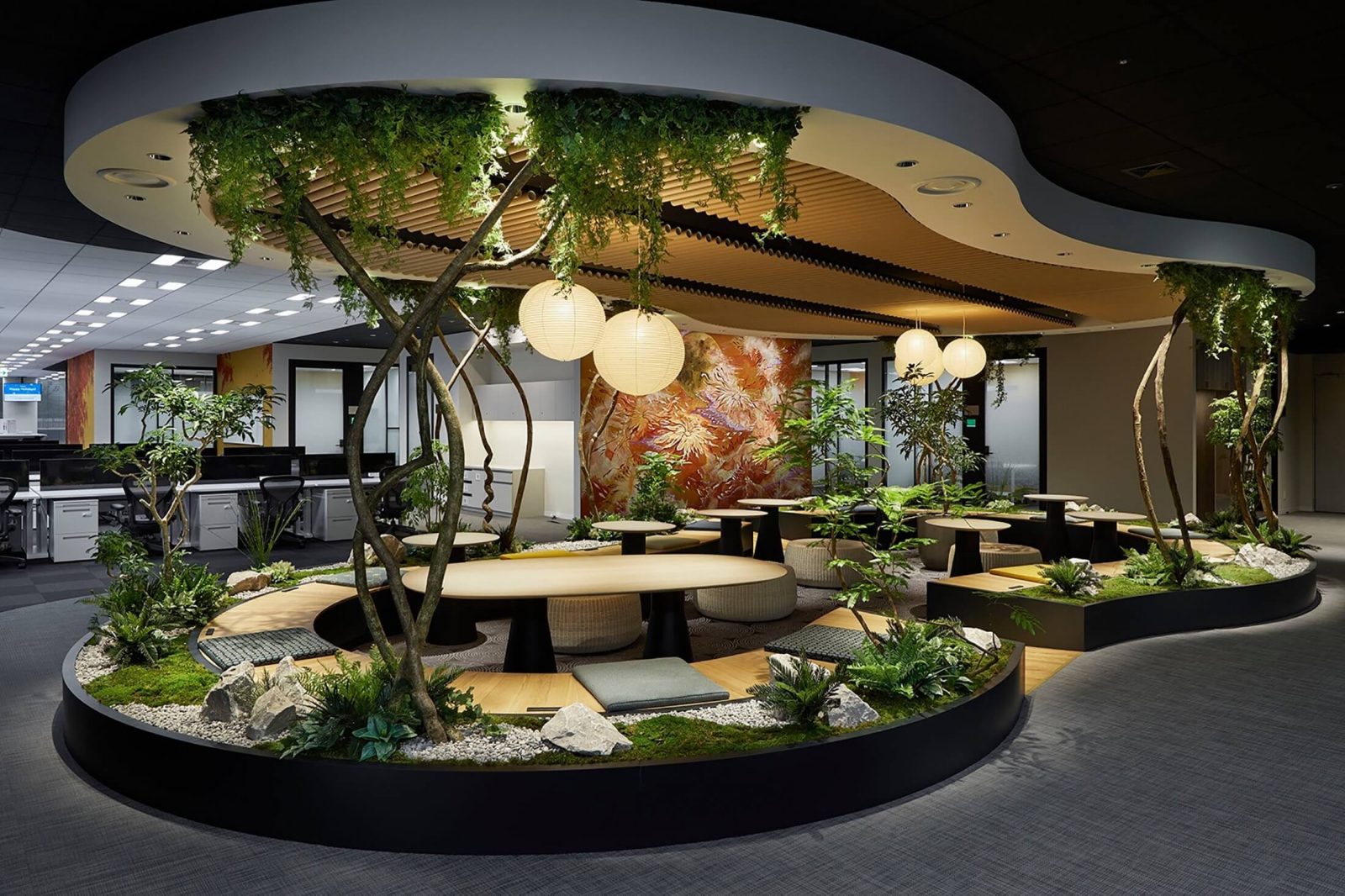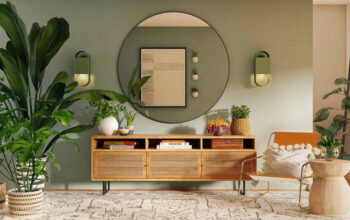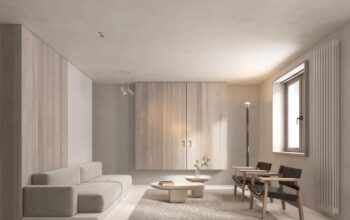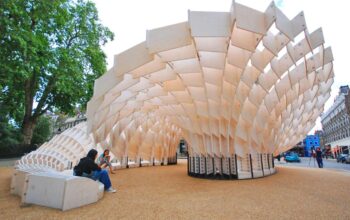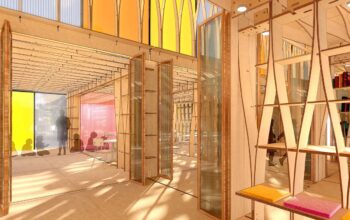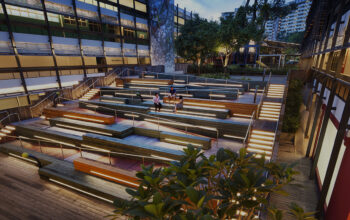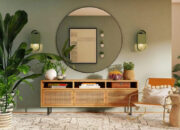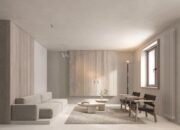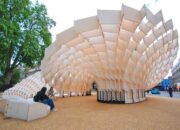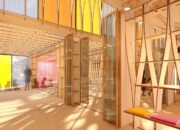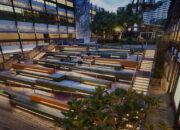The human connection to nature is innate, deeply rooted in our evolutionary history. For millennia, our well-being has been intrinsically linked to the natural world. However, as urbanization accelerates and modern life increasingly detaches us from natural environments, a profound shift in architectural philosophy is gaining momentum: the thriving of biophilic design principles. Biophilic design is an innovative approach to architecture and interior design that seeks to integrate natural elements, processes, and phenomena into the built environment. It is far more than simply adding a few plants to a room; it’s a systematic method of designing spaces that foster a profound, restorative connection between humans and nature, leading to enhanced physical health, mental well-being, and cognitive function.
The resurgence of biophilic design is not a fleeting trend but a fundamental re-evaluation of how we construct our living and working spaces. It acknowledges that human well-being is directly influenced by our surroundings and that incorporating natural patterns, forms, and systems into urban environments can dramatically improve quality of life. This holistic approach recognizes that nature is not merely an aesthetic addition but a vital component for creating truly habitable, productive, and healing spaces. As research increasingly validates the benefits, biophilic design is rapidly becoming a cornerstone of sustainable, human-centric architecture.
The Scientific Imperative for Biophilic Design
The growing acceptance and implementation of biophilic design are strongly supported by a burgeoning body of scientific research from various fields, including environmental psychology, neuroscience, and urban planning. This research highlights the profound positive impacts of human-nature interaction on health and productivity:
- Reduced Stress and Improved Mental Well-being: Studies have consistently shown that exposure to natural environments, or even representations of nature, can significantly lower stress hormones (like cortisol), reduce anxiety, and improve mood. Biophilic design creates calming and restorative environments that mitigate the mental fatigue and stress often associated with urban living.
- Enhanced Cognitive Performance: Access to natural light, views of nature, and the presence of natural elements have been linked to improved concentration, increased creativity, and better problem-solving skills. Natural environments provide a form of “soft fascination” that allows for mental restoration, enhancing our ability to focus on demanding tasks.
- Improved Physical Health Outcomes: Biophilic design can contribute to better physical health by improving indoor air quality (through natural ventilation and plants), regulating circadian rhythms (through natural light exposure), and potentially even speeding up recovery times in healthcare settings. Reduced noise and exposure to natural patterns can lower blood pressure and heart rate.
- Increased Productivity and Creativity: In office environments, biophilic design elements have been shown to boost employee productivity, reduce absenteeism, and enhance job satisfaction. Access to natural light and views, for example, correlates with higher reported comfort levels and improved task performance.
- Social Cohesion and Community Building: Well-designed biophilic public spaces, such as parks, green roofs, and community gardens, can foster social interaction, strengthen community bonds, and encourage outdoor activities, leading to more vibrant and connected urban neighborhoods.
- Environmental Stewardship: By bringing nature closer to people, biophilic design can cultivate a greater appreciation for the environment, potentially encouraging more sustainable behaviors and a stronger sense of environmental responsibility among occupants.
Core Principles and Elements of Biophilic Design
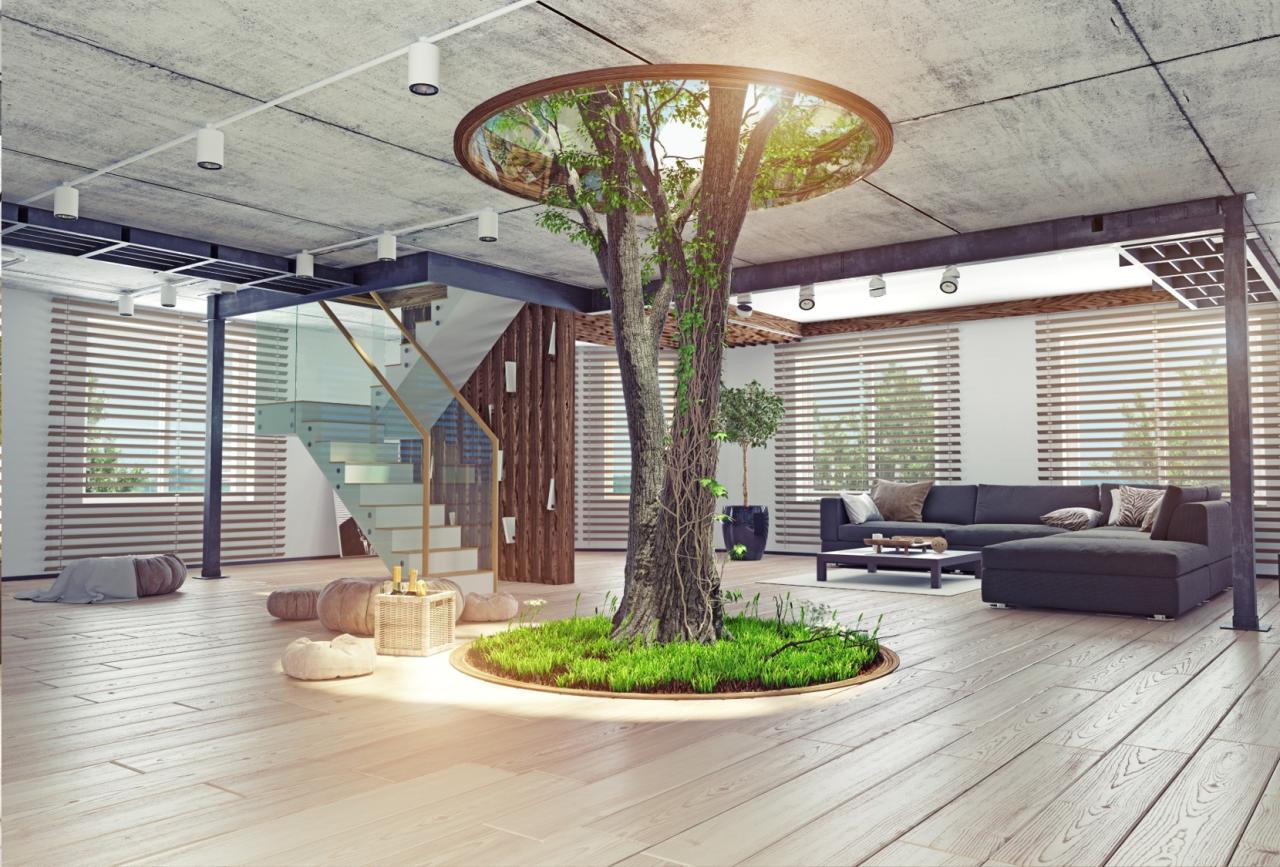
While biophilic design is multifaceted, it can be understood through a set of core principles and the strategic integration of specific natural elements. Stephen R. Kellert, a leading authority in biophilic design, identified several dimensions that serve as a framework:
Direct Connection to Nature
Natural Light and Air: Maximizing daylighting and natural ventilation reduces reliance on artificial systems, regulates circadian rhythms, and improves indoor air quality.
Water Features: The sight and sound of water (e.g., fountains, ponds, living walls with water flow) are inherently calming and provide a multisensory natural experience.
Vegetation (Plants and Gardens): Indoor plants, living walls, green roofs, and accessible outdoor gardens purify air, reduce noise, provide visual appeal, and offer a direct connection to living systems.
Animals: Integrating opportunities for observing non-threatening animal life (e.g., bird feeders, fish tanks) can foster engagement and a sense of vitality.
Weather: Designing to allow occupants to sense subtle changes in weather (e.g., sunlight moving across a room, the sound of rain) connects them to the external environment.
Indirect Connection to Nature
Natural Materials: Using materials that reflect natural patterns and processes (e.g., wood, stone, cork) can evoke a sense of nature even without direct living elements.
Natural Colors and Patterns: Incorporating colors, textures, and geometric patterns found in nature (e.g., fractal patterns, biomimicry) can subconsciously connect us to natural forms.
Biomorphic Forms and Shapes: Designing with shapes and forms inspired by nature (e.g., curved walls, organic furniture) rather than purely rectilinear structures.
Views and Vistas: Creating opportunities for views of nature, even if through a window, provides a visual connection to the outside world.
Simulated Natural Light: Advanced lighting systems that mimic natural light cycles or specific light qualities (e.g., dynamic lighting that changes color temperature throughout the day).
Experience of Space and Place
Prospect and Refuge: Designing spaces that offer a sense of “prospect” (an unimpeded view over a distance, providing a sense of control and safety) combined with “refuge” (a place of retreat and enclosure, offering a sense of protection).
Mystery and Peril/Risk: Incorporating elements that create a sense of intrigue, discovery, or even a perceived, controllable challenge (e.g., winding paths, partially obscured views, slightly elevated walkways) to stimulate engagement.
Transience: Elements that subtly change over time, such as light patterns shifting throughout the day, the aging of natural materials, or the growth of plants, provide a dynamic connection to natural processes.
Connectivity to Natural Systems: Making visible the processes of nature within a building, such as rainwater harvesting systems, solar energy generation, or the flow of air.
Applications Across Various Building Types
Biophilic design principles are versatile and can be effectively applied across a wide range of building types, yielding significant benefits:
Workplaces and Offices
Benefits: Increased employee productivity, reduced absenteeism, improved creativity, higher job satisfaction, and a more positive work environment.
Examples: Integrating living walls, maximizing natural light, providing views of green spaces, using natural materials like wood and stone.
Healthcare Facilities
Benefits: Faster patient recovery times, reduced pain perception, lower stress levels for patients and staff, and improved patient outcomes.
Examples: Gardens for patients, views of nature from patient rooms, natural light in common areas, water features in healing gardens.
Educational Institutions
Benefits: Improved student concentration, reduced ADHD symptoms, enhanced academic performance, and better overall well-being for students and teachers.
Examples: Classrooms with ample natural light and outdoor views, school gardens, natural playgrounds, and learning spaces that open to nature.
Residential Buildings
Benefits: Enhanced mood, reduced stress, improved sleep quality, stronger connection to nature, and increased property value.
Examples: Large windows with nature views, private balconies with planters, access to community gardens, natural ventilation, and the use of natural interior materials.
Retail and Hospitality
Benefits: Increased customer satisfaction, longer dwell times, higher sales (in retail), and improved guest experience and loyalty (in hospitality).
Examples: Indoor living walls, natural light-filled spaces, water features, biomorphic forms in design, and outdoor seating areas integrated with greenery.
Challenges and Considerations in Implementation
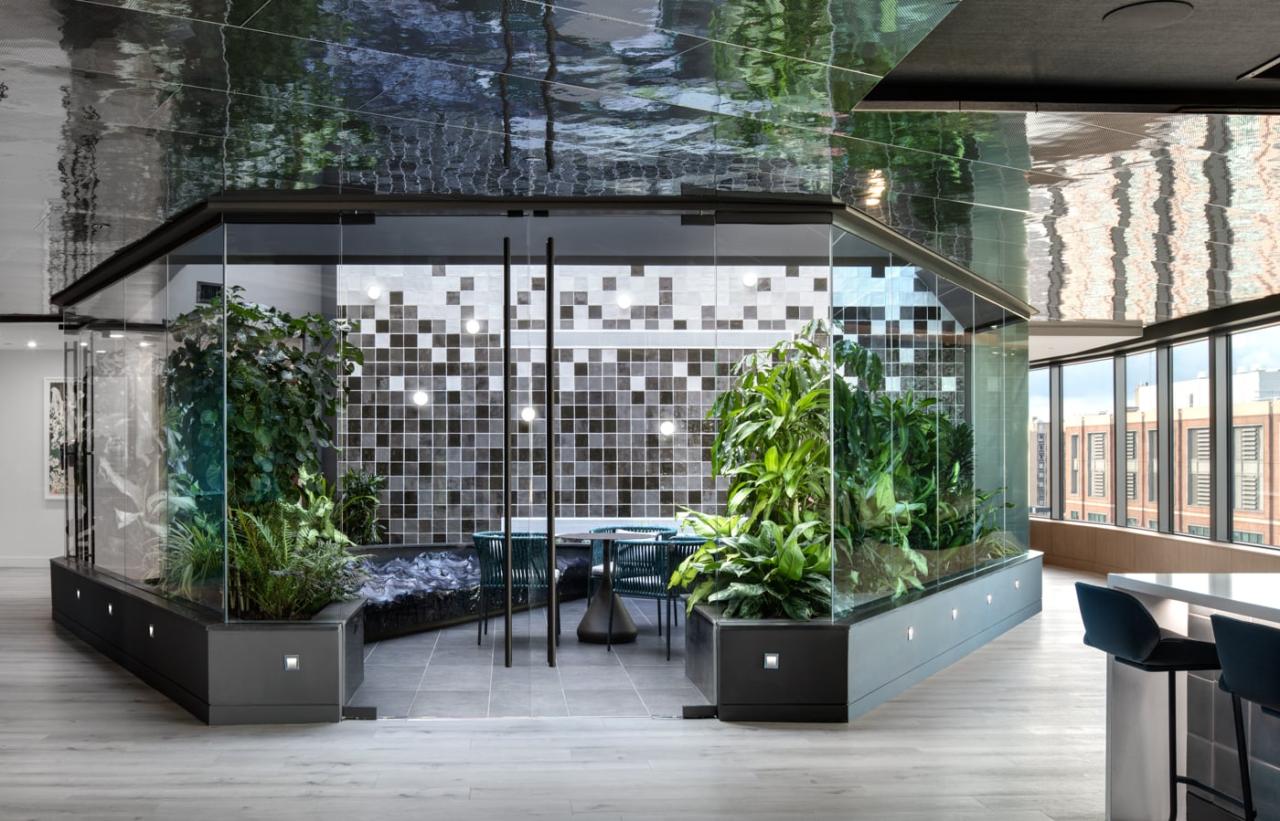
While the benefits are clear, implementing biophilic design effectively requires careful planning and consideration:
- Cost Implications: Initial costs for some biophilic elements, such as complex living walls or extensive natural material use, can be higher than conventional alternatives. However, these are often offset by long-term operational savings and productivity gains.
- Maintenance Requirements: Living elements like plants and water features require ongoing maintenance, which needs to be factored into the building’s operational budget and design.
- Space Constraints: In dense urban environments, finding sufficient space for extensive green infrastructure can be challenging. Creative solutions like vertical gardens and rooftop farms become essential.
- Integration with Building Systems: Seamlessly integrating natural elements with existing or new HVAC, lighting, and water systems requires careful design and engineering to ensure efficiency and longevity.
- Climate and Regional Appropriateness: Biophilic solutions must be tailored to the local climate and native ecosystems to be truly sustainable and effective. What works in a temperate zone may not be suitable for a desert environment.
- Aesthetic and Cultural Sensitivity: Design choices should resonate with the cultural context and aesthetic preferences of the building’s users and locale.
The Future of Biophilic Design
The trajectory of biophilic design is not merely a passing trend but a foundational shift in how humanity will interact with its built environment. As our understanding of human physiology, psychology, and ecological systems deepens, biophilic design is poised to become an indispensable element of all future construction and urban planning. The evolution of this field will be characterized by greater sophistication, deeper integration, and a broader application across various scales, moving beyond individual buildings to entire urban ecosystems.
Advanced Biophilic Technologies and Responsive Environments
The future will see a seamless integration of cutting-edge technology to enhance biophilic experiences. Imagine dynamic lighting systems that don’t just mimic natural light but actively respond to external weather conditions, adjusting intensity and color temperature in real-time to simulate cloud cover or the warmth of a sunset, even in windowless rooms. Smart ventilation systems will not only optimize air quality but also introduce natural scents (e.g., subtle forest or ocean aromas) at specific times, managed by AI. Haptic technology could even simulate the sensation of natural textures or gentle breezes on demand. We might see “digital windows” displaying real-time, high-definition views of pristine natural landscapes that adapt to the time of day, offering a psychological escape for those in dense urban settings without direct access to nature. Augmented reality (AR) and virtual reality (VR) will also play a role, offering immersive natural experiences within confined spaces, though these will ideally complement, not replace, physical nature.
Performance-Based Design and Data-Driven Biophilia
As biophilic design matures, the emphasis will shift heavily towards quantifiable outcomes. The future will involve sophisticated monitoring systems embedded within buildings that collect data on occupant well-being (e.g., stress levels via wearables, cognitive performance tests) and environmental parameters (e.g., air quality, light levels, humidity, plant health). This data will feed into AI-driven analytics, allowing designers to precisely understand which biophilic interventions yield the greatest benefits and to optimize designs for specific desired outcomes – be it improved concentration in an office, faster healing in a hospital, or enhanced relaxation in a residential setting. This performance-based approach will not only validate the financial and human capital return on investment for biophilic elements but also refine best practices and drive continuous innovation based on empirical evidence.
Biophilic Urban Planning and Ecological Corridors
The application of biophilic principles will expand beyond individual buildings to encompass entire urban landscapes. Future cities will be designed with interconnected networks of green infrastructure, known as “ecological corridors.” These will include extensive urban forests, interconnected park systems, green roofs on almost every building, vertical farms integrated into high-rises, and restored natural waterways. The goal is to create a seamless flow of nature throughout the city, making access to green spaces effortless for all residents. Urban planning will prioritize pedestrian and cyclist networks woven through these green spaces, fostering active transportation and daily immersion in nature. Biophilic urbanism will also involve regenerative design, where urban ecosystems actively clean air and water, support biodiversity, and contribute to local food production, essentially making the city function more like a natural ecosystem itself.
Increased Regulatory Support and Incentives
As the profound benefits of biophilic design become undeniable and universally recognized, governments and urban planning authorities worldwide will likely integrate biophilic requirements into building codes and zoning ordinances. This could manifest as mandates for minimum green space ratios, requirements for natural light access in all habitable rooms, incentives for biophilic retrofits of existing buildings, and tax breaks for developers who achieve high biophilic design certifications. Green building rating systems (like LEED and BREEAM) will evolve to include more robust and nuanced biophilic metrics, encouraging broader adoption and pushing for higher standards. Public policy will recognize biophilic design not just as an aesthetic choice but as a critical component of public health infrastructure and climate resilience.
Conclusion
The rise of biophilic design principles marks a pivotal moment in architecture’s evolution. It represents a shift from designing merely functional or aesthetically pleasing structures to creating environments that genuinely nourish the human spirit and promote holistic well-being. By thoughtfully integrating natural light, living systems, natural materials, and the timeless patterns of the natural world, architects and designers are not just constructing buildings; they are crafting living habitats that reconnect humanity with its fundamental biological imperative for nature. This approach is not only essential for our health and happiness but also for fostering a deeper appreciation and stewardship of the planet. As biophilic design continues to thrive, it promises a future where our built environments are not separated from nature but are, in essence, an extension of it, contributing to more resilient, sustainable, and truly livable cities for generations to come.

